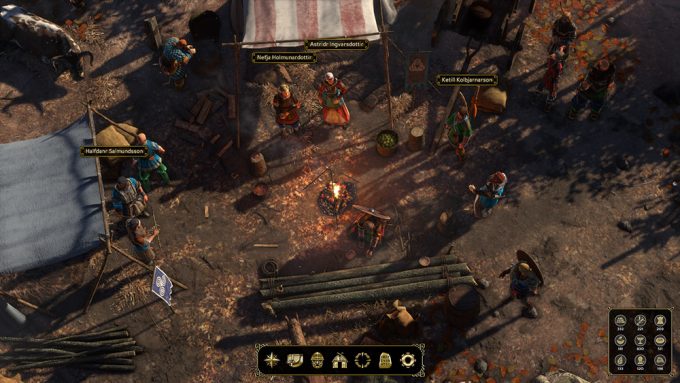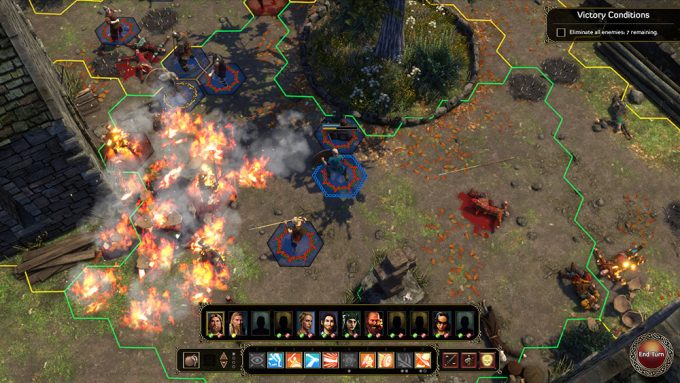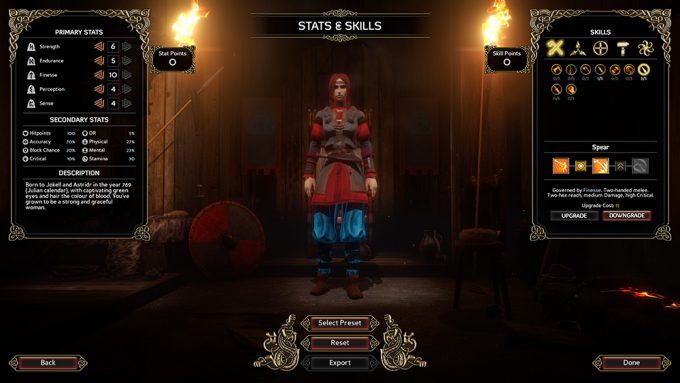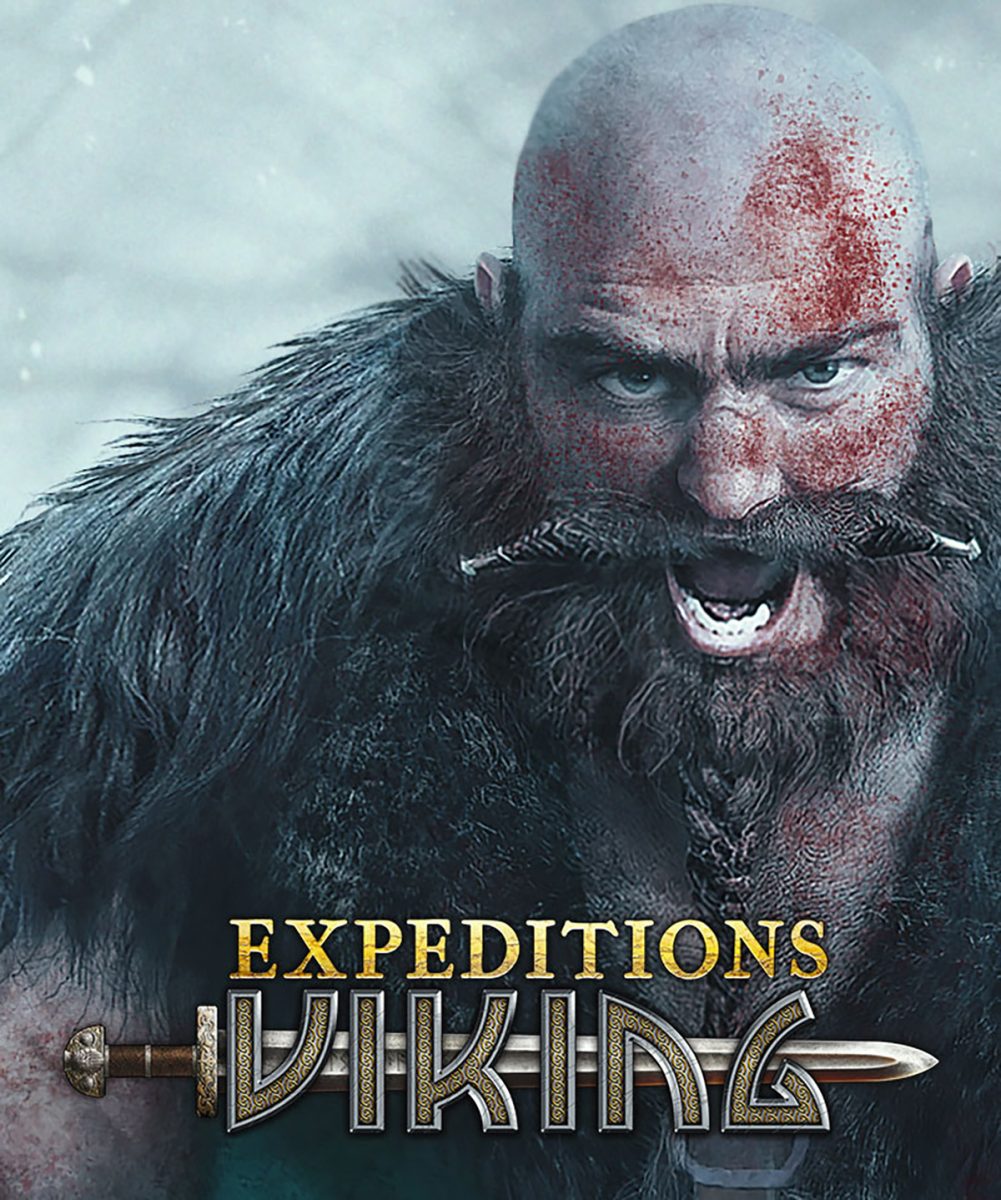I am the oncoming storm.
I am the one who arrives in new lands, who brings destruction upon enemies, whom the Gods favor. I am covered in armor, I wield a sword, I bring pain and blood but also mysticism and faith.
I am the first Viking.
At least, that’s how I feel when playing Expeditions: Viking, the new game from developer Logic Artists.
Never mind that my father just died and I have to inherit his lordly title, or that I have friends and relatives ready to stab me in the back, or even that my father’s death was mysterious and the lands are falling apart — I’m still a badass with a big sword, and I love it.
Though there’s a core plot to E:V, the game’s main reason for existing is its attention to historical detail. Any number of narratives could be set within the world, any kind of story, but the one that is there does so seemingly to let us see and hear and breathe everything about history’s most fierce warriors. The game throws us right into the chaos following our father’s death. We’re now the ruling Thegn, and our relative newness means that we’re in everyone’s crosshairs. We’re immediately attacked, forced to either negotiate or battle our way out of a mess that is somehow neither unexpected nor anticipated yet almost necessary.
In one scene early on I am tasked to quell a rebellion, forced into a battle against a former supporter of my father’s. Do I fight with honor, yet at a severe disadvantage in both my size and gameplay (being so early means I’m still finding my way around)? Do I try to weaken him with a local witch’s poison, knowing that he may find out later? I choose the less moral route, eventually besting him in combat. I’m satisfied that I won, and he would eventually become one of my most important allies, but the worm remains in his head that I cheated him.

Every situation seems to hang on my choice of words, making me sometimes sit for several minutes and think about the possible outcomes. Will my decisions show weakness? Will they lead to war? It can be borderline nerve-wracking when it feels like such weight is placed on what is normally a mundane part of gaming, and we’re often doubting whatever it was we just said, but I love that feeling of uncertainty.
This is a testament Logic Artists’ emphasis on the social ramifications of our actions. Our decisions affect everything, from a current situation to how our teammates view us over time. For instance, if we’re aggressive then our battle-minded teammates will support us further, while our more passive party members will consider us as sort of trigger happy. If we take a lot of cover during battles, our partners might think we’re hiding too much (even though we may just be getting better positioned to come around another side for a better attack angle). This changes a lot of how the game plays out, branching paths apart with almost everything we do. The organic nature of the narrative path means that every playthrough could feel unique, leading to a lot of replayability or at least a lot of reloading of saves.
Either way, all of these choices and dialogue let us see more into the life of the Viking. It’s a historical essay with a plot, and the devs have made it a point to make sure that the world is as accurate as possible. The art and architecture is spot on with accounts of the time, and history has shown us the brutality of the age, but things we never really knew were how extravagant and sociable the Norse could be. Art, clothing and jewelry played an important role in their lives, and civil constraints and classism were offset by a great depth of personality and family life. When we create our characters at the game’s onset, we can reflect not only those aspects (my lead’s beard is gleaming) but the differences in their social standing.
This results in lead and supporting characters that are instantly memorable, with complexities that reveal themselves over time.

While the Viking world reveals the trials and tribulations of the people, it’s merely a setup for a grander narrative. Our father died on his way towards a new land, hoping to expand trade or pillage for resources, and it’s up to us to determine the best course of action when we ultimately get there. What we’ve learned in negotiation and compromise in our own lands is put to use in the new ones. We’ve ascended as a Thegn, but now must not only defend our title we also need to expand our reach.
The moment the game pivots away towards this new adventure it effectively doubles the size of the experience; there’s more to see, more to uncover, and more to sweat over.
All of this is wrapped in another layer of realism that is perhaps the icing on the cake for the game. Logic Artists have essentially taken a fantasy role-playing game — with spells, magic, gods and mysticism — and ripped out the fantasy. Reality can be just as surprising when we don’t have dragons and wizards as a crutch. It can be convenient to make a game in a fantasy world, where reality is shifted to adapt to our plot or gameplay needs. In the case of Expeditions: Viking, our world is full of unknowns and fear. Viking faith and belief had answers for these unknowns, whether it was gods or witches or beasts, but those were always reflected in reality. These are best showcased during the turn-based combat. Healing isn’t a cast spell as much as it is an herb-based salve, and adding offensive buffs are war cries that increase adrenaline, not add otherworldly strength.
It makes the unmagical feel magical.
But, it also means that it requires an insane amount of management to contain it all. E:V is one of the deepest, sometimes most encumbering games I’ve played in a long time. It can feel overwhelming at times to navigate menus, especially with menus and UI that feel dated and overly complex. It can take precious time to navigate to a specific stat improvement when all we have is an icon to find and hovering text to wait for. It’s a lot of spreadsheet values thrown at me at all once that I don’t think I quite understand even after hours and hours of play time.

Because of emphasis on other aspects of the game, it gives the impression that the visuals were sort of a casualty. Environments look good from a distance, but the closer we get the more rough around the edges they become. Though my PC isn’t as powerful as the latest Titan-based products, it’s only a couple of years old and can hold its own, and fit within the recommended specs of the game. A slightly wet wash seems to cover the world, as if the art direction was trying to bring the in-game digitally painted scenes to polygons and missed the target.
There are some minor technical issues that plague the game as well. Even through the multiple pre-release updates, excruciatingly long loading times make me wonder if the game has stopped functioning or not, and the screen scroll can be unpredictable. None of these are game-breaking, and are typically the kind that are worked out in post-release patches, but they do slow me down at times.
Getting past a few of these annoyances leads to the kind of experience that may very well bring me back to PC gaming. The expert mix of mysticism, exploration and authenticity leads to an engaging history lesson, and the combat and game mechanisms provide depth and replayability that I can see lasting an entire Summer. It’s a game worthy of the subject it hopes to teach us about. Expeditions: Viking has me donning the armor and soul of one of antiquity’s greatest human weapons, and I’m ready to do it again.
Time to get my mind sharp and my sword bloody.
This review is based on a PC Steam code sent to SideQuesting by the publisher.



No Comments